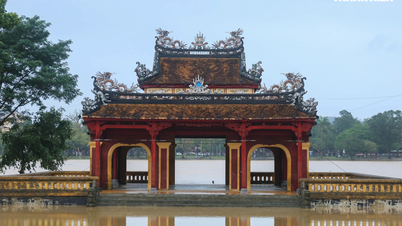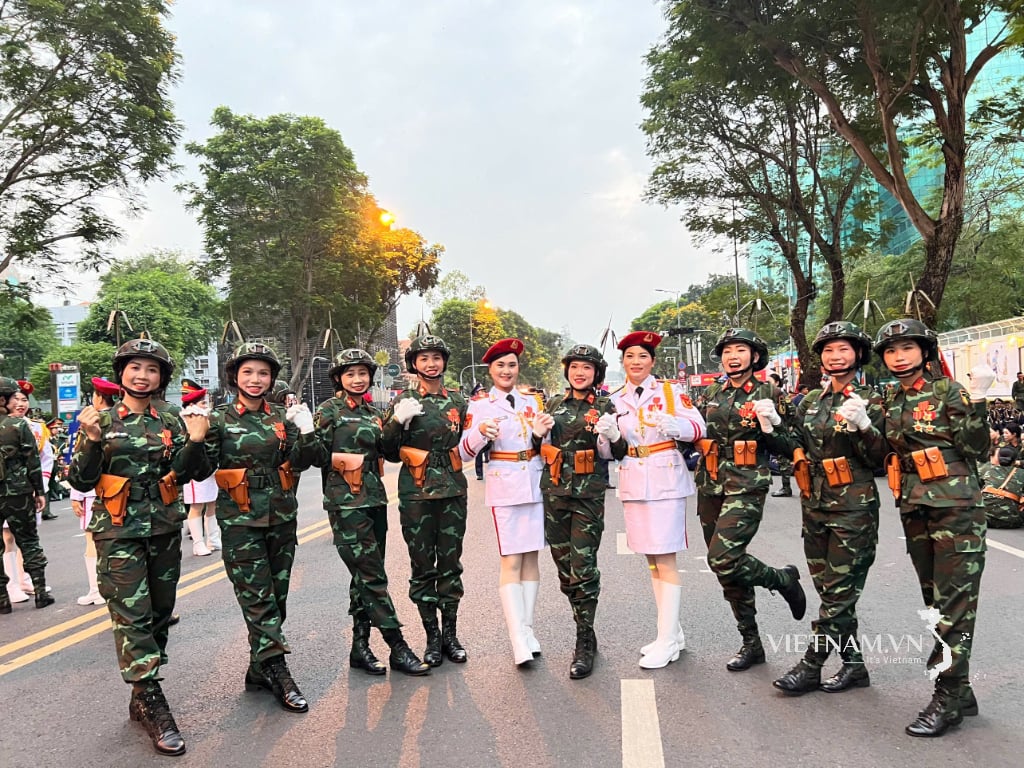During Tet (Vietnamese New Year), Vietnamese families always place a tray of five fruits on the ancestral altar, with a bunch of bananas at the center. Known as the "Bananas offered to the King" since ancient times, and recognized in 2012 by the Vietnam Book of Records as one of the top 50 specialty fruits of Vietnam, the Dai Hoang Royal Banana (Hoa Hau, Ly Nhan) is not only a precious gift on ordinary days but also a top choice for families to buy and offer to their ancestors during Tet.
Ngự Banana - Top 50 Specialty Fruits of Vietnam
According to the people of Dai Hoang village, once King Tran and his entourage sailed from Thang Long (Hanoi) to Thien Truong royal palace and stopped at Ly Nhan to try a local variety of banana. Finding the fruit delicious, the king rewarded them and ordered it to be cultivated. From then on, the bananas of Dai Hoang village were known as "Ngu bananas," or "bananas offered to the King."

According to Mr. Nguyen The Vinh (a member of the Provincial Association of Literature and Arts), who has conducted numerous studies on folk culture, the gentle Chau River flowing through Hoa Hau, combined with the cool and fresh climate, has enriched this rural area with unique soil. These natural advantages, along with the diligence and creativity of the people, have given this region famous for its delicious fruits, including the Ngự banana.
In his book "Nam Cao - Sources of Literature," Nguyen The Vinh wrote about Dai Hoang village: "Here, there are few rice paddies and many orchards; the main source of livelihood comes from gardening, weaving, and trading. Being close to the market and the river, the land is fertile, and the people are diligent and skillful. Since ancient times, the products of Dai Hoang and Cao Mon have been famous both within and outside the court. In spring, there are oranges and tangerines. In summer, there are lotus seeds and longan. In autumn, there are persimmons, a type of fruit that ripens slowly, its stem remaining green; when sliced, it automatically forms a membrane, remaining sweet even after being eaten the next day. Persimmons are seasonal, while bananas ripen year-round. Dai Hoang royal bananas are transported across the Chau River to the Trung Quang and Trung Hoa palaces, offered to the Three Patriarchs of Truc Lam at Pho Minh Pagoda. Nam Dinh's Rong Market is famous for its silk and royal bananas."
The writer Nguyen Tuan described it as follows: "The peel is incredibly thin, the flesh of the banana shines with the color of sand and sugar. Some bunches, when the dry leaves covering them are lifted, reveal layers upon layers of old, dried-up bananas, holding up to a dozen hands. Some people, because they wanted to bring a bunch of these royal bananas to the capital as a gift, had to travel by ship. It took much longer than traveling by car or train. But sending the bananas by ship prevented them from being shaken off and ensured their safety... That's how it is now. In the past, these precious royal bananas, with their golden hue, slender fruit like a girl's hand pulling thread, peel as thin as silk, and a delicate, refined fragrance, were carried by boat, shouldered high, to the imperial capital of Hue to be presented to the emperor."
Mr. Vinh said that in the past, Ngự bananas were more abundant in Nam Định city, probably because trade was difficult at that time, and Đại Hoàng was closer to Nam Định. In the 1980s, when he worked at Văn Nhân Magazine (a publication of the former Nam Hà Literature and Arts Association), he often hosted poets and writers from the central government who came to Nam Định. These renowned writers and poets were quite discerning in their appreciation of fine food, but even the pickiest writer Nguyễn Tuân exclaimed: "There are two 'pleasures' in Nam Định: 'Reading the poetry of Tú Xương' (the poet Tú Xương) and eating Ngự bananas." The gifts he bought for literary guests when they came to Nam Định for work were always pork sausage and Đại Hoàng Ngự bananas.

According to some online sources, Dai Hoang bananas come in three varieties: white, buffalo, and jackfruit. However, locals in Dai Hoang currently only cultivate one type, commonly known as yellow banana (due to its yellow flesh). Mr. Tran Quy Thuong, a banana grower and collector in the village, explains that only yellow bananas are grown in Hoa Hau and surrounding areas. He also mentions another variety called "Southern banana," which resembles a small banana and, due to lack of care, is stunted and sour.
The Ngự Đại Hoàng banana is small, firm, and perfectly round. When ripe, it's plump, bright yellow, and has a very thin peel. Peeling it and taking a bite reveals the yellow flesh. Even with the peel thin and yellow, the flesh remains firm, unlike the soft flesh of regular bananas. The banana has a rich, sweet, and fragrant flavor that spreads throughout the mouth, awakening the senses of taste and smell. The color, aroma, and taste of Ngự Đại Hoàng bananas are unmatched by any other type of banana.
The fragrance of Ngự bananas spreads far and wide…
Ms. Tran Thi Lu, 64 years old, was born and raised in Hoa Hau and married a man from the same village. Her family's garden has two plots of "Ngự" banana trees right next to her house, inherited from her parents. She says that her parents and grandparents have been growing "Ngự" bananas since their time. "Ngự" bananas sell well during the full moon and new moon days, and are especially expensive during Tet (Vietnamese New Year). Families buy bunches of ripe "Ngự" bananas, freshly cut from the tree with the tendrils still attached, and gently wipe them with a clean cloth dampened with a little white wine. The small, green bananas become shiny. Two bunches of bananas are placed on two porcelain plates on either side of the five-fruit offering on the altar to worship their ancestors. During Tet, thanks to the fragrance, the "Ngự" bananas gradually ripen, turning a golden yellow and emitting a fragrant aroma, making the Tet atmosphere truly warm and cozy.
Ms. Lu said that besides her time selling goods at the market, she takes great care of her banana garden. Growing and caring for the Ngự banana variety is basically the same as growing and caring for regular bananas, not too difficult. To get large bunches and plump fruit, she plants them sparsely. Each banana plant only has two stems, one mother plant and one sucker, yielding an average of two bunches per year. Ngự bananas are very susceptible to stem borers, so it's necessary to regularly remove dry leaves and fronds and clean the trunk. The banana trunk is tall and brittle, so when the tree starts bearing fruit, it needs support stakes. Bananas shouldn't be harvested when they're too ripe, as the peel can easily crack. She also mentioned that banana cultivation doesn't allow for controlled fruiting like some other fruit trees; bananas flower and bear fruit at the right time, so even during Tet (Lunar New Year), the amount of bananas harvested remains the same as usual, or even less because the cold weather slows down banana growth. Normally, her 2 sao (approximately 0.2 hectares) garden yields 5-7 bunches of bananas per month, priced at over 100,000 VND per bunch.
During Tet (Vietnamese Lunar New Year), Ngự bananas are much more expensive, costing around 500,000 VND per beautiful bunch sold at the orchard. Throughout the year, traders come directly to the orchard to buy the best bunches; only the smaller bunches need to be taken to the market. Ms. Lữ added that every year, by around the 20th of Tet, all the bananas in her orchard are sold. Growing bananas doesn't require much care, and she earns a little extra money each month. "I'm very proud that my hometown's specialty is increasingly sought after, so I'm determined to keep growing Ngự bananas in my orchard," she said.

Thanks to effective promotion, the popularity of Dai Hoang royal bananas has spread far and wide, not only boosting the expansion of banana cultivation but also forming a team of people specializing in collecting bananas to supply distributors in various provinces and cities. Mr. Tran Quy Thuong stated: "In the locality, there are about 20 people who specialize in collecting royal bananas to supply distributors in the South and the North."
Mr. Thuong has been doing this job for decades, specializing in supplying customers in Nam Dinh. On a normal day, he buys about 30-50 bunches of bananas. During Tet (Lunar New Year), he buys about 400-500 bunches each year according to orders, and sometimes it's still not enough. The price of Ngự bananas also increases during Tet, around 60-70 thousand VND per bunch. Since there isn't enough in the commune, he has to buy more from neighboring areas. Mr. Thuong also shared his method of ripening Ngự bananas: he has to build a rice husk oven, hang the bananas inside, burn the rice husks, and time it. After about one night, when he opens it, the bananas are speckled yellow. This natural ripening method ensures safety and makes the banana peel yellow while keeping the fruit firm.
Although the area of orchards in Hoa Hau has shrunk considerably, walking through the alleys of Hoa Hau commune, you can still see many gardens growing Ngự bananas. According to locals, Ngự bananas grown in the village are also delicious, but those grown on the riverside alluvial soil are still the best. Areas surrounding Hoa Hau also grow a considerable amount of Ngự bananas to meet market demand.
Nature has bestowed upon Dai Hoang a precious fruit variety. However, preserving, developing, and spreading the value of this specialty fruit is the responsibility of the people of Hoa Hau. With their diligence, creativity, quick adaptation to market mechanisms, and desire to introduce their homeland's specialty fruits to a wider audience, the people of Hoa Hau have made the reputation of the Ngu banana spread far and wide. They have been justly rewarded through the economic value derived from the Ngu banana, while also contributing to enriching the culture of the rice-growing region and promoting tourism development.
Do Hong
Source




![[Photo] Prime Minister Pham Minh Chinh presides over a meeting on private sector economic development.](/_next/image?url=https%3A%2F%2Fvphoto.vietnam.vn%2Fthumb%2F1200x675%2Fvietnam%2Fresource%2FIMAGE%2F2025%2F12%2F20%2F1766237501876_thiet-ke-chua-co-ten-40-png.webp&w=3840&q=75)


![[Photo] Prime Minister Pham Minh Chinh presides over the conference announcing the establishment of the International Finance Centre in Vietnam.](/_next/image?url=https%3A%2F%2Fvphoto.vietnam.vn%2Fthumb%2F1200x675%2Fvietnam%2Fresource%2FIMAGE%2F2025%2F12%2F21%2F1766309817714_ndo_br_dsc-3400-jpg.webp&w=3840&q=75)

























































































Comment (0)